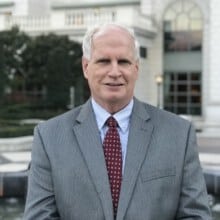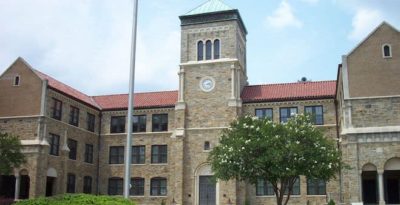Recent statements by Wake County Public School System (WCPSS) officials about changing several low-performing traditional schools to year-round schools, and also changing how students are assigned to popular magnet school programs, have raised the anxiety levels of many parents and students. It has also brought to light one immutable truth: Parents wish they had more control over where their children go to school and how they learn.
We know all parents want the best education for their children. They want to be able to send their children to a school that is appropriate for their academic and social needs. Unfortunately, for too many children that’s only a dream.
Thankfully, there is a way for parents to change that: the Education Savings Account.
Education Savings Accounts – or ESAs for short – empower parents to regain control over their child’s education. They provide parents with a taxpayer-funded account that they can use to pay for educational expenses such as tuition, books, tutoring and testing. ESAs are funded by transferring a percentage – in most cases between 85 and 95 percent — of the per pupil support to that account.
The appeal of ESAs is that they put parents in control of the education of their children. Parents decide where their children are educated and how they will be educated.
One area where ESAs have had success is with special needs students. In the case of special needs children, these changes are especially beneficial. Because of the severity and variety of disabilities, many school districts lack the resources and personnel to adequately educate these children. Education Savings Accounts give parents the resources and freedom to place their children into appropriate learning environments and create an academic program that works for them.
Currently, Arizona and Florida are the only states with ESA programs. Arizona passed the first program in 2011. The program was originally focused on special needs students. However, it has since expanded to include children of active military personnel, foster children and children attending failing schools. Last year three states – Mississippi, Tennessee and Nevada – passed ESA legislation. Nevada’s program, by far the most ambitious in the nation, provides parents on average with $5,100 to help cover the educational expenses of their children. Unfortunately, last week a Nevada judge imposed an injunction against the program, claiming it was unconstitutional. Supporters remain confident and have vowed to appeal the decision.
A variety of local and national polls confirm that parents want more choices in how their children are educated. A November 2015 Civitas Poll found that when asked, if they could provide their children with the best education possible, where would parents send their children to school, only 32 percent selected a traditional public school. The combined other choices totaled 63 percent: a traditional public school, 28 percent; public charter, 17 percent; magnet school, 10 percent; home school, 7 percent; and virtual school, 1 percent. (Totals don’t add to 100 percent because of rounding and nonresponses.) These trends are especially prevalent in Wake County, where charter school enrollment has increased 54 percent and new enrollment increases in charter, home school and private schools have eclipsed new enrollment in the traditional public schools.
This growth shows parents have embraced alternatives to traditional educational options. It’s what parents want. ESAs offer parents an effective and efficient way to meet the needs of traditional students as well as students who are often not well-served by the public schools.
The benefits of ESAs, however, are more than personal. Depending on the level of severity, special needs ESAs can tailor an education program to meet the needs of individual students. Educating special needs students can be expensive. Moreover, providing special needs students with appropriate educational environments and therapies can also encourage independence and provide long-term cost savings. In addition, since the cost of educating students at many private schools is less than that of public schools, offering ESAs for traditional students can also produce significant cost savings.
One of ESAs’ strongest selling points is the ability to customize education. That is a good thing for many obvious reasons but also because it can lead to unbundling educational services and fostering greater innovation in the education marketplace.
ESAs can also infuse our educational system with incentives to save and economize. ESAs put parents in charge of spending for their child’s education. Since parents have limited funding yet gain choice over what services to purchase, ESAs provide an incentive to economize and save – especially if states allow parents to roll over remaining funds to the next year or allow remaining ESA funds to be used for college expenses.
We all want our children to succeed in school and life. No one has a stronger desire for children to succeed than parents do. Our policies need to reinforce those linkages and allow students to attend the schools that best fit their academic and social needs. The current system fails to meet those goals and masks a deep and growing problem: Too many children are trapped in schools that are struggling or are not a good fit for students’ academic or social needs. ESAs provide parents with the freedom to make those decisions, and they also restore hope for a brighter future. For those reasons, ESAs are an idea whose time has come.


